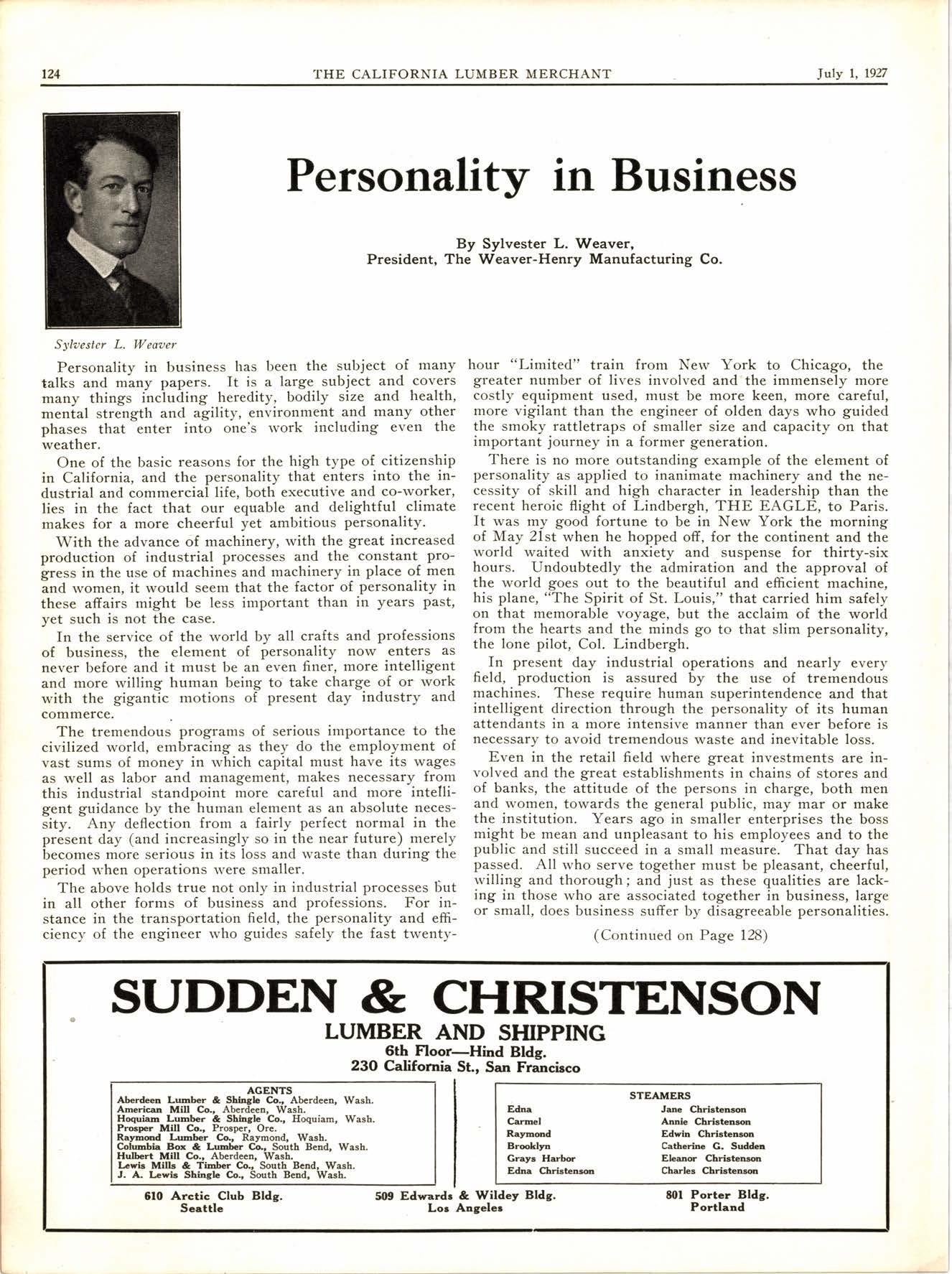
2 minute read
Conditions in the Northwest Lumber Industry
By Carl Crow Editor Crow's Pacific Coast Lumber Index
The Northwest lumber industry is in a norrnal condition which means that prosperity is two jumps ahead of it and the sherift one jumP behind.
To relate events of the first half of this year would only be to repeat practically word for word the conditions experienced in 1926 for the same period. However, g€oerally speaking, the demand up to now has not been quite as steady as it was last year and had it not been for a program of production regulation which has been carried out try a majority of the better mills there is no question but what they would be in a much poorer position than they are now. Prices have at no time advanced, with rare exceptions on a limited number of items, but they have held remarkably firm considering everything and while the regulation of the cut has not resulted in getting any more money for the lumber, it is estimated that on a conservative basis it.has prevented a decline of at least three dollars per thousand feet, rvhich proves that it has been worth while.
If such a thing were possible it would look as though the various markets for the timber products of Oregon and Washington were in league to keep the manufacturers in a state of penury. Like a balky team that never tests its united strength, first one and then another of the major markets takes its turn at going dead, thereby robbing the general demand of the necessary final push to put it up to a point where the mills can have something to say about Prices.
To start out with, the car material demand, while by no means big in the way it is usually measured, was very satisfactory and prices held strong for the first three months. When the demand for yard stock began to improve a little in April and the situation became more hopeful, new placements of car material commenced to taper off. During this time the export demand had been fairly good, at least from a volume standpoint and the Atlantic Coast had picked up to the point where it was limited only by the available tonnage in which to make delivery. All of a sudden when the combined improvement in domes.tic.retail yard business and the Atlantic Coast demand had been sufficient to offset the lack to car material, the Japanese financial crash came along and for a few weeks had a very detrimental effect even though it was largely psychological. The Japanese were actually out of the market for only a very short time and their new placements began to grow slowly. About this time and up to the present moment the volume of business coming from the domestic yards that are served by all rail shipments thruout the middle west and east showed a slight but steady shrinkage.
Prices on an averag'e, in spite of the constantly shifting consumption, have not been much changed. The Atlantic Coast water demand has been by far the most virile of all the markets this year and prices being received on lumber for shipment there have strengthened and held their ground with little effort. But unfortunately or fortunately, depending upon the point from which you view it, the limited carrying space of the boats running regu: larly in the Atlantic Coast has forced the mills to dump the usual amount of their side cut in California and with disastrous results.
(Continued on Page 130)










